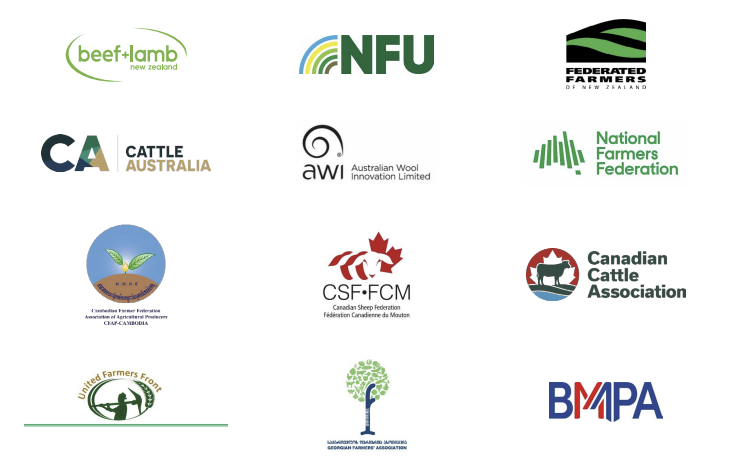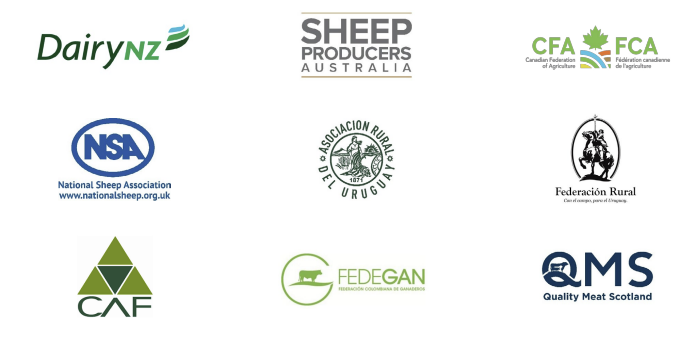Leather in Pop Culture
Charlie Chaplin’s famous “lucky leather boots” were an iconic part of his Tramp costume.

A joint statement by agricultural organisations from Argentina, Australia, Cambodia, Canada, Colombia, Georgia, India, Ireland, Kenya, New Zealand, the United States, the United Kingdom, Uruguay, and South Africa.
Farmers, processors and relevant sector organisations from 14 nations have united to call for the Parties to the United Nations Framework Convention on Climate Change (UNFCCC) to follow best scientific practice and take a split gas approach when reporting long-lived and short-lived greenhouse gas emissions (GHGs). A split gas approach is needed to more accurately reflect the contribution of the agricultural sector to climate change.
UNFCCC guidelines are clear and allow national GHG inventories to report GHG emissions separately and set Nationally Determined Contributions (NDCs) in any form they wish. This can be done in parallel while also reporting using the standard GWP100 metric. Uruguay has already demonstrated the best scientific practice and set a split gas NDC: other countries should follow this leadership.
In addition, the UNFCCC has committed to a first review of its modalities, procedures and guidelines, to be undertaken by the Subsidiary Body for Scientific and Technological Advice (SBSTA) no later than 2028. This review provides an important opportunity to embed a split gas approach into future reporting frameworks, ensuring that national inventories and NDCs better reflect the distinct warming behaviours of long- and short-lived GHGs. We request that all UNFCCC parties support a split gas approach as an outcome of this review process.
Long- and short-lived GHGs behave very differently in the atmosphere. Long-lived gases, such as nitrous oxide (N2O) and carbon dioxide (CO₂), are sometimes described as ‘stock’ gases because they accumulate over time. Short-lived gases, such as biogenic methane, are often referred to as ‘flow’ gases because their relatively short lifetime means the rate of their ongoing emissions determines their warming effect.
The current practice of using GWP100 to report NDCs creates ambiguity by obscuring the warming impacts of the different gases. Although GWP100 works well when summing or comparing the warming impact of various long-lived GHGs (such as carbon dioxide and nitrous oxide), it does not accurately represent the warming impact of short-lived GHGs (such as biogenic methane).
The science is clear: emissions of long-lived gases must reach net zero by reducing as far as possible and then balancing with carbon storage or removals to prevent further warming. In contrast, emissions of short-lived gases, like biogenic methane, only need to decline gradually to have the same effect. This fundamental difference in behaviour needs to be recognised in climate policy, and adopting a split gas approach is the most effective way to do so.
The agricultural sector is not alone in making this request and supports an earlier initiative by scientists calling for best practice reporting, by separate gases, rather than continuing to use GWP100 as a combined metric.
Communicating biogenic methane emissions using GWP100, as many NDCs, GHG inventories, and policies currently do, is generally an inaccurate reflection of warming. GWP100 overstates the effect of constant methane emissions on global surface temperature by a factor of 3–4. It also understates the effect of any new methane emission source by a factor of 4–5 over the 20 years following the introduction of a new source.
A split gas approach does not limit the options available to policymakers, as ambitious mitigation approaches for both long-lived and short-lived GHGs are possible with a split gas approach. Instead, it focuses policy on the warming impact of the GHGs and, therefore, on the warming impact between sectors.
In addition to taking a split gas approach, we also advocate the use of warming-based metrics relevant to respective long- and short-lived gases, which have already been recognised by the Intergovernmental Panel on Climate Change (IPCC) as providing better estimates of warming impact.



We ask that all UNFCCC parties:
Communicate their NDCs using a split gas approach;
Complement split gas NDCs with split gas GHG inventories, split gas GHG budgets, split gas product life cycle assessments, and take a split gas approach to all climate policies;
Support the use of a split gas approach as an outcome of the first review of UNFCCC modalities, procedures, and guidelines;
Use, where appropriate, warming-based metrics that have been recognised by the IPCC to better compare the warming impact of long- and short-lived GHGs relative to GWP100; and
Support robust discussion on the balance between biogenic methane management within the agricultural sectors and the need for food security under a changing climate.
The joint statement represents the following organisations:
A split gas approach to emissions reduction targets. This would create separate emissions reduction targets for different types of GHGs that warm our atmosphere in different ways.
Separate targets help focus attention on each type of GHG reduction needed to keep our climate within liveable boundaries.
Currently, most countries do not distinguish between emissions reductions from short-lived pollutants and long-lived pollutants in their net zero goals. This means the real-time impact of planned reductions cannot be properly understood and may or may not constrain climate change within liveable boundaries.
Expressing methane emissions as carbon dioxide equivalent emissions using GWP100 (as most NDCs do) overstates the effect of constant methane emissions on global surface temperature by a factor of 3–4. It also understates the effect of any new methane emission source by a factor of 4–5 over the 20 years following the introduction of the new source.
The future warming of our atmosphere depends on our current temperature and emissions, and future emissions (and removals), but different combinations of short- and long-lived emissions will produce very different futures. The use of the current single-basket approach does not adequately capture this reality.
The IPCC AR6 pathways show when the world could ‘tip’ into a warmer state based on the emissions trajectory. They do this by combining methane emissions and carbon dioxide emissions in a way that averages methane’s impacts over 100 years (hence GWP100). This means that over a 100-year period, methane emissions are estimated to be 28 times more powerful than carbon dioxide emissions in terms of temperature impact.
But, as highlighted above, the current modelling overstates the effect of constant methane emissions on global temperature by a factor of 3–4 while understating the effect of increased methane emissions by a factor of 4–5.
Climate policy is fundamentally about reducing atmospheric warming. A split gas approach would be a more accurate way of reporting to ensure that agricultural climate policy is on the right track.
We request that countries set NDCs that do not bundle methane and carbon dioxide together. Separate contributions from short-lived and long-lived GHGs can be reported by countries. This does not necessarily have to affect any existing or planned NDCs or long-term net zero strategies reported using aggregate CO2-e GWP100.
So what next?
We believe the extra transparency of a split gas approach will, over time, produce policy shifts which better protect our future climate and more accurately reflect the contribution of the beef and dairy sectors.
Uruguay has already started to develop separate future emissions pathways for short- and long-lived GHGs.
The conversation needs to shift from reducing emissions to also reducing warming impacts.
Establishing a separate pathway for short-lived emissions opens up a new conversation about what is a ‘fair and achievable’ emissions reduction target for global agriculture.

Charlie Chaplin’s famous “lucky leather boots” were an iconic part of his Tramp costume.
.png)
Kering and Shanghai Fashion Week Join Forces to Champion Next-Gen Chinese Talent

Gen X is Quietly Dominating Luxury. How to Approach Them?
